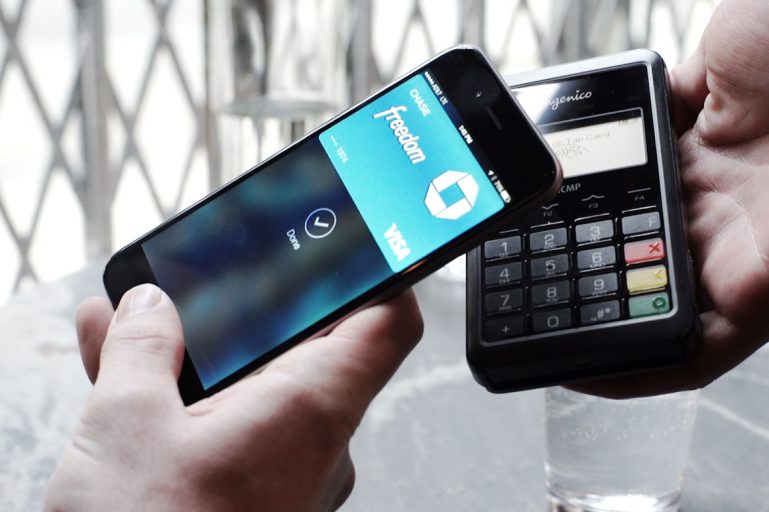
Your Comprehensive Guide to Contactless Payments
New payment methods have emerged in recent years, providing both convenience and more choices for consumers. One of the newest of these payment methods is “contactless payments.”
Though there is increasing press coverage on contactless payments, many merchants and consumers are still not clear on its uses and benefits. Here is our guide to one of the newest developments in the payments space.
What are Contactless Payments?
According to Smart Card Alliance, contactless payments are “payment transactions that require no physical connection between the consumer payment device and the physical POS terminal.” Instead of swiping a credit card into a terminal, the consumer might wave a SpeedPass wand at a gas pump, tap a MasterCard key fob against a reader, or initiate payment via a mobile payment app on a smartphone or wearable. American Express, Visa, and MasterCard all offer some form of contactless payment – each of which conforms to international standards for contactless smart chip technology. Though similar to RFID (Radio Frequency ID) tags in terms of wireless communication, contact payment devices can only be read when they are within a few inches of the point of sale terminal, whereas RFID tags can be read from much greater distances. They use what’s known as near field communication (NFC).
Key fobs, wands, and contactless credit cards are powered by smart chip technology. Payment information is stored within the device’s internal memory and transmitted to the reader using an embedded radio frequency antenna. Mobile apps may or may not use RFID technology to facilitate contactless payments. For example, if you use the Starbucks mobile app to pay for your lattes, the app displays a barcode that is readable via a scanner at the point of sale. Though technically contactless, this payment method does not use RFID or NFC to communicate with the payment terminal. In contrast, Apple Pay and Google Wallet do. It’s not just bank cards that are going contactless. The mass transit industry has embraced contactless payment systems. For example, drivers with transponders in their cars can pay tolls instantly by simply entering a designated toll road. As the car passes under the reader, the reader picks up the transponder’s signal and processes the payment.
The History of Contactless Payments
According to the Asia Pacific Smart Card Association, contactless transport cards were first launched in Seoul, South Korea in 1995. NearFieldCommunication.org says that Coca Cola introduced one of the earliest forms of mobile payments in their vending machines in 1997. These vending machines took payments via text messages. That same year, ExxonMobile introduced its SpeedPass wand which attaches to a keychain. Motorists simply pump gas and then wave the wand in front of the SpeedPass reader in order to pay. With this particular contactless payment system, consumers do not need to fumble with their wallets, walk to a terminal, or enter a PIN. It’s fast and easy. As smartphones emerged and became popular, the move to mobile payments soon followed. Google Wallet, which was released in 2011, takes advantage of Android’s built-in NFC capabilities to facilitate “tap and pay” payments. Apple released its contactless payment method, Apple Pay, in 2014 with the release of the iPhone 6 and iPhone 6 Plus. These iPhones use NFC to wirelessly communicate with the payment terminal. The Apple Watch adds Apple Pay support to iPhone 5, iPhone 5C, and iPhone 5S.
What are the Benefits of Contactless Payments for Consumers?
For consumers, contactless payments translate to convenience. Just as it’s easier to wave a keychain in front of a gas pump than it is to dig out a credit card and walk over to a machine, the same is true of using a smartphone to pay. Integrated fingerprint readers, such as the case with the iPhone 6 and Apple Pay, make secure contactless payments a simple matter of touch. With most contactless payment methods, there’s no need to enter a PIN or sign a receipt, resulting in even faster transactions. Enhanced security is also a benefit. Contactless payment methods use encryption to securely transmit data. Since the customer never hands over the card to the clerk, dishonest clerks no longer have the opportunity to “skim” the card. Likewise, there’s less of a risk of leaving a card behind since it never leaves the consumer’s hands. In the past, payment options were limited to cash, check, and/or credit or debit card, each of which were typically stashed in a wallet. Devices such as wands and tags can be attached to the customer’s keychain and mobile apps are just a tap away on smartphones. Today’s consumers no longer need to carry fat wallets or heavy purses with them wherever they go.
What are the Benefits of Contactless Payments for Business Owners?
There is no doubt that contactless payments can provide more convenience for consumers, but they also have benefits for business owners. For example, because contactless payments are faster than traditional payments, the checkout times can be significantly reduced, allowing more transactions in a given period. Studies have shown that contactless payment transactions take an average of 12.5 seconds while credit card transactions take 26.7 seconds and cash transactions take 33.7 seconds. This translates into faster service and shorter lines. Another benefit to business owners involves customer loyalty. Consumers like the convenience of contactless payments and may be more likely to frequent establishments where they can use their preferred payment method. Improved security could also lessen retailers’ exposure to theft. Individual credit card numbers are not transmitted to the retailer’s point of sale system. Rather, a unique one-time code is issued and encrypted. Thus, if the system is hacked and the codes decrypted, the numbers would still be useless to criminals. Accepting contactless payments is advantageous to business owners, potentially giving them a competitive advantage over their competitors. As this payment method becomes more widely embraced, business owners may not have a choice.
What’s Going on in the World of Contactless Payment Trends?
The United Kingdom is the world leader in contactless payments, according to research by Timetric, with about one-third of all payment cards being contactless. One of the trends occurring in the UK involves a move from cash to cards, particularly for low value transactions. According to WorldPay’s Contactless Made Easy report, in the United Kingdom: The number of contactless payments WorldPay processed increased by 249 percent between 2012 and 2013. 60 percent of transactions processed at grocery stores are contactless payments. 51 percent of transactions processed in the retail sector are contactless payments. 48 percent of transactions processed at restaurants and pubs are contactless payments. According to the Smart Payment Association, dual interface cards (those with both chip and PIN and contactless interfaces) experienced 77 percent year-over-year growth and an 89 percent share of contactless shipments in Europe in 2012. In the Asia Pacific Region, the number of contactless users increased by 49 percent between 2013 and 2014, with Australia leading the way followed by Singapore, Hong Kong, and New Zealand. The United States has been slower to adopt “chip” cards than the rest of the world, but is making steady progress. Of the 1.5 billion “smart” payment cards shipped in 2014, roughly 40 percent were contactless payment cards. However, this number represents less than 10 percent of all of the payment cards shipped in the United States.
Are Contactless Payment Methods Here to Stay?
Contactless payment methods first appeared about 20 years ago. Both contactless payment technology and mobile technology have matured significantly since, making their way into the hands of consumers. Consumers appreciate the benefits and improved security of this payment method, and are increasingly embracing it. Only time will tell for certain what its impact will be, but given the many benefits that it can provide, it would certainly be the wise choice for business owners to stay informed and prepared to offer it to customers.
Want to try ShopKeep for yourself?
Just answer a few easy questions.
Need help finding the right point of sale?
Just complete the form. We’ll call you right back to explain how ShopKeep can work for you.
Hit the ground running.Sprinting, in fact!
Read our free, comprehensive guide, Small Business 101, to learn all you need to know about starting a thriving business.

